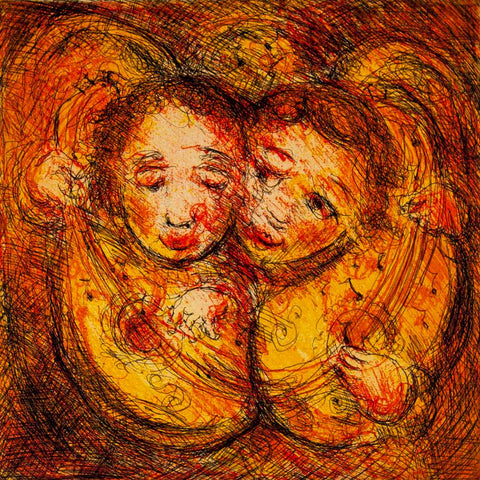Can art change the world? Yes, but not in the way you might expect. Recently it hasn’t only been cultural vanguards singing art’s transformative potential, but a growing cohort of scientists and economists who see in art’s persuasive power and modes of being, a path through pressing economic and environmental challenges.
The circular economy, an economic model fast gaining traction, proposes to eliminate waste through reuse and recycling. It rejects the ideal of exponential growth in favour of sustainability. This idea of finding and sharing value in what already exists is not novel to collectors who, by practice, treat art as ever-renewing.
As Angela Tandori Fine Art evolves into Art & Collectors, our circular way of being has emboldened. For the economy, environment and culture to imagine a better future, what goes around must come around.

Light Bulb Moment
So how do circular economies work? One example is Philips Light Bulbs, who in 2017 shifted their business model from selling lights to lighting as a service. Their clients saved money by only paying for the light they used, while also eliminating the hassle of replacing light bulbs. In turn, Philips retained control of its products, helping them to feed used materials back into production.
The world is stuttering under distending waste. If we want to live long and well, our mindsets must shift from propellant growth, disposal and consumption, to reuse, recycle and innovation.

Our Circular Model
The circular economy resonates with our vision for our Collector Charter. This vision sees collecting as a lifecycle where works of art are discovered, cared for, shared and then passed to a new custodian thoughtfully.
Practically, this means that if you collected a work from us, we will help it find a new home if you choose to part from it. We also specialise in collectible - as opposed to decorative - art, beauty that resists disposal. We want collectors to be custodians, a notion that recognises the vital role collectors play in preserving and promoting culture.

How Art Can Help
The role of art in promoting the circular economy is instructional and inspirational. Artists have always been ad-hoc circular economists, using discarded materials to produce objects which resist disposal. These objects are passed between custodians whose objective is to nurture and protect.
This model is radically counter to consumer culture which is predicated upon take-make-waste, infinite production and infinite waste.
Art can also shift mindsets. As lawyer and advocate James Gustave urges:
“The top environmental problems are selfishness, greed and apathy, and to deal with those we need a spiritual and cultural transformation, and we scientists don't know how to do that."
Reason and science can only take us so far; we need the power of art to change minds.

Our Circular Model
The circular economy resonates with our vision for our Collector Charter. This vision sees collecting as a lifecycle where works of art are discovered, cared for, shared and then passed to a new custodian thoughtfully.
Practically, this means that if you collected a work from us, we will help it find a new home if you choose to part from it. We also specialise in collectible - as opposed to decorative - art, beauty that resists disposal. We want collectors to be custodians, a notion that recognises the vital role collectors play in preserving and promoting culture.

Sidney Nolan - 'Still Life with Butterfly'
While we can’t transform our economic system overnight, we can invite the circular ethos into our lives. Instead of asking how much money we can make, we might ask how we can benefit existing systems.
In the context of collecting, it’s about situating art in relation to people, history, knowledge and the future – how can we protect, champion and share art for future generations?
